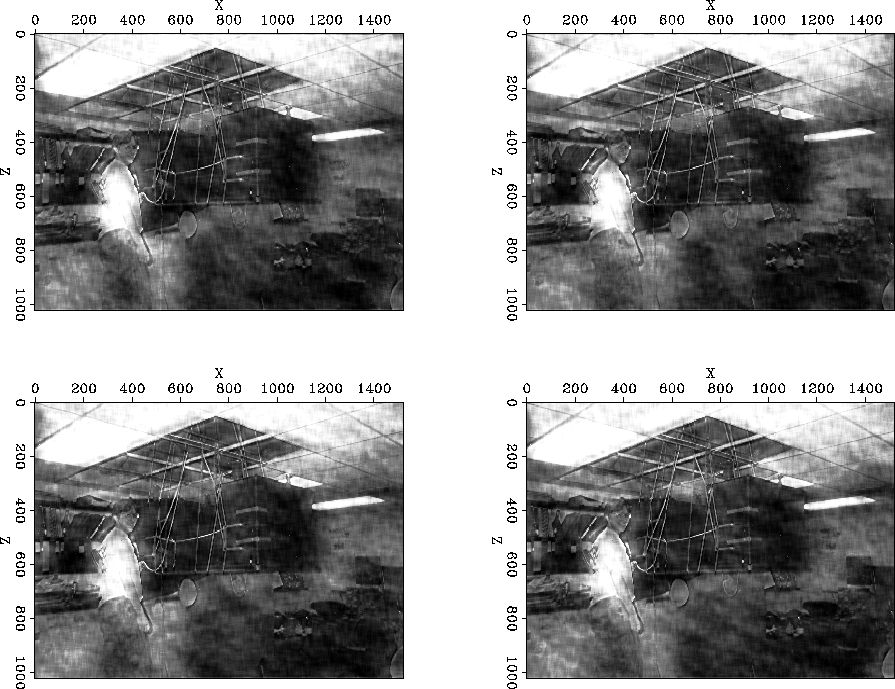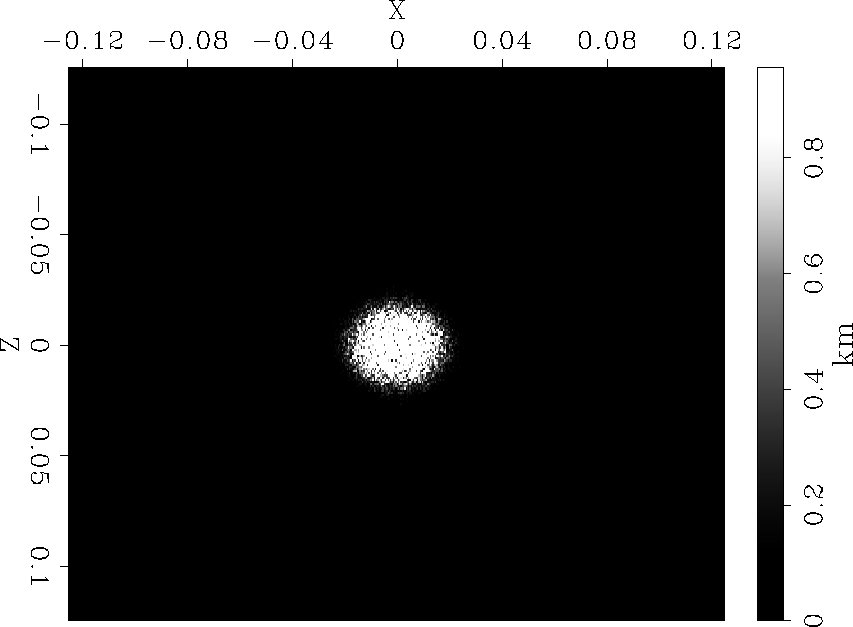 |
Figure 10 Four realizations using the fitting goals (9). Note how the amplitude of the noise is consistent with our synthetic experiment but the spectrum shows more energy and large wavenumbers.
![[*]](http://sepwww.stanford.edu/latex2html/movie.gif)
![[*]](http://sepwww.stanford.edu/latex2html/cross_ref_motif.gif) . These models
have about the right amplitude of noise but
have a higher frequency noise component than our
synthetic test.
The reason for this discrepancy is that the
noise filter does not effectively describe the
noise spectrum in our synthetic. Figure
. These models
have about the right amplitude of noise but
have a higher frequency noise component than our
synthetic test.
The reason for this discrepancy is that the
noise filter does not effectively describe the
noise spectrum in our synthetic. Figure ![[*]](http://sepwww.stanford.edu/latex2html/cross_ref_motif.gif) shows the spectrum of the noise added in our synthetic
test (the noise seen in the left panel of Figure
shows the spectrum of the noise added in our synthetic
test (the noise seen in the left panel of Figure ![[*]](http://sepwww.stanford.edu/latex2html/cross_ref_motif.gif) ).
Note how the spectrum outside a very small band is zero.
Emulating this behavior with a filter is nearly impossible
and requires a prohibitively large filter. As a result,
we are limited in what type of noise we can describe by
the practicality of building a filter that accurately captures
its spectrum.
).
Note how the spectrum outside a very small band is zero.
Emulating this behavior with a filter is nearly impossible
and requires a prohibitively large filter. As a result,
we are limited in what type of noise we can describe by
the practicality of building a filter that accurately captures
its spectrum.
 |
![[*]](http://sepwww.stanford.edu/latex2html/movie.gif)
|
noise
Figure 11 The spectrum of the noise added in the synthetic problem shown in Figures ![[*]](http://sepwww.stanford.edu/latex2html/cross_ref_motif.gif) - -![[*]](http://sepwww.stanford.edu/latex2html/cross_ref_motif.gif) . .
|  |